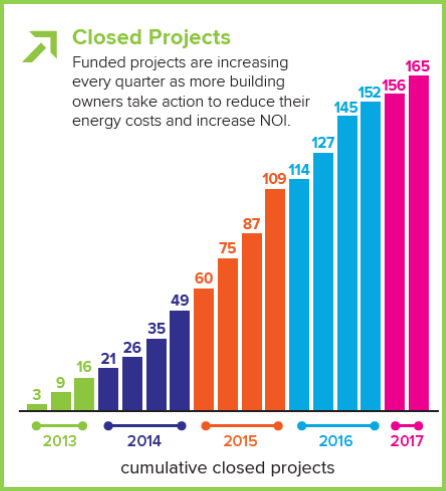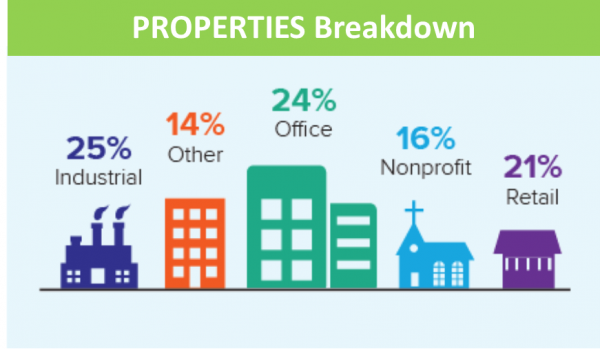PERSPECTIVE - Early Childhood Care and Education: A Prudent Investment
/by Joanna Meyer, Michael Strambler, Clare Irwin and George Coleman Young children are often compared to sponges because they constantly soak up new knowledge. In serving children under five, high-quality early childhood care and education programs aim to capitalize on this stage of rapid brain development in efforts to promote positive outcomes among children.
Much has been learned about the impact of early childhood education from research over the past several decades. While some researchers have shown that the positive effects of early childhood programs on children’s achievement may fade over the first years of elementary school, research with longer time horizons tells a different story about long-term effects.
For example, the Perry Preschool Project and the Carolina Abecedarian Project are two rigorously studied programs in which at-risk children were tracked from birth into their 30s. Half of the children participated in an intensive early childhood education program from infancy to kindergarten entry while the other half did not. When children who had participated in these programs grew into adults, they had improved educational attainment, employment, earnings, and health outcomes. They also engaged in less criminal activity and fewer unhealthy behaviors.
 These research findings have important implications for society. If early childhood programs produce healthier adults, investing in these programs could reduce the burden on the health care system. If children who participated in early childhood programs grow up to experience higher employment rates and earnings, requests for public assistance should decrease. If these children are less likely to engage criminal activity, their communities and society as a whole should benefit.
These research findings have important implications for society. If early childhood programs produce healthier adults, investing in these programs could reduce the burden on the health care system. If children who participated in early childhood programs grow up to experience higher employment rates and earnings, requests for public assistance should decrease. If these children are less likely to engage criminal activity, their communities and society as a whole should benefit.
Research also points to clear economic implications of investing in early childhood education. For example, through studies of two specific programs that served students from birth to age five and following children into their thirties, economists have estimated a social benefit to society of $7.30 for every $1.00 spent on early childhood programs, with an annual return on investment of 13.7%.
While this estimate is based on two small demonstration programs, another study analyzed evaluations of a wider range of early childhood programs and noted that the federal Head Start program produces persistent beneficial effects on long-term outcomes. It also made the case that a comprehensive cost/benefit analyses of Head Start would reveal a high rate of return.
How would investing in early childhood education pay off in Connecticut? In a recent policy brief by Connecticut Voices for Children, the authors use the 7.3 benefit/cost ratio to estimate the benefits and costs of early childhood education in Connecticut. According to these estimates, it would cost $1.8 billion dollars to provide high-quality early childhood care and education to all Connecticut children under age 5, and this care would have a long-term economic benefit of $13.3 billion.
It is also important to note that in states like Connecticut with vast economic disparities, the provision of high-quality early childhood education alone is not enough to level the playing field for disadvantaged children. Many low-income children are concentrated in poor neighborhoods, and research has shown that the neighborhood in which a child is raised impacts the child’s inter-generational mobility.
Children living in poverty are more likely to face toxic stress that results from food insecurity, housing instability, and limited access to health care, all of which can impact children’s short- and long-term outcomes. Maximizing the impact of high-quality early childhood education may include addressing the causes of toxic stress, which in turn requires investment in supportive services for families.
In the midst of the current fiscal crisis in Connecticut, lawmakers are urgently seeking ways to reduce the short-term budget deficit. When evaluating potential reductions to spending on education and social services for young children and their families, it is critical to consider the long-term impacts of such an approach.
According to the cost-benefit analyses described above, cutting $1M of early childhood education funding from the state budget now could result in a $7.3M reduction in long-term benefits to society. The evidence suggests that across-the-board cuts to the programs that serve Connecticut’s most vulnerable citizens is economically imprudent in the long run.
_____________________________________
Joanna Meyer, M.A.T., Michael Strambler, Ph.D., Clare Irwin, Ph.D, and George Coleman, M.Ed., M.A.are the Management Team for the Partnership for Early Education Research (PEER), an alliance among early childhood stakeholders in Connecticut that engages in collaborative research focused on children from birth through age 8. By pursuing questions developed in collaboration with its members, PEER aims to produce rigorous, actionable research that can inform early childhood education policy and practice at the local and state levels, increase access to high-quality early childhood education, and reduce disparities in educational outcomes. Funding support for PEER is provided by the U.S. Department of Education’s Institute of Education Sciences (IES) and the Spencer Foundation.





 boilers, energy efficiency lighting measures, HVAC systems, and other energy improvements that help building owners to take control of their energy costs.
boilers, energy efficiency lighting measures, HVAC systems, and other energy improvements that help building owners to take control of their energy costs. without the support of our contractors, capital providers, municipal officials, and other stakeholders who have contributed to the C-PACE movement,” said Mackey Dykes, Vice President of Commercial, Industrial and Institutional programs at the Connecticut Green Bank. “There is still significant potential for energy improvements for Connecticut businesses and non-profits, and we look forward to bringing cleaner and cheaper energy to more building owners across the state.”
without the support of our contractors, capital providers, municipal officials, and other stakeholders who have contributed to the C-PACE movement,” said Mackey Dykes, Vice President of Commercial, Industrial and Institutional programs at the Connecticut Green Bank. “There is still significant potential for energy improvements for Connecticut businesses and non-profits, and we look forward to bringing cleaner and cheaper energy to more building owners across the state.” make the financing of clean energy deployment more accessible and affordable for consumers and businesses. In 2011 the state legislature created the Connecticut Green Bank, the nation’s first green bank. It uses public funds to attract private capital investment in green energy projects. By leveraging private investment, the Green Bank significantly increases the total amount of financing available for clean energy projects.
make the financing of clean energy deployment more accessible and affordable for consumers and businesses. In 2011 the state legislature created the Connecticut Green Bank, the nation’s first green bank. It uses public funds to attract private capital investment in green energy projects. By leveraging private investment, the Green Bank significantly increases the total amount of financing available for clean energy projects.



 The report noted that “Medicaid beneficiaries are prescribed opioids at twice the rate of the rest of the population, and research indicates they are at 3 to 6 times greater risk of a fatal overdose.” The report also observed the impact of the epidemic on the nation’s prison population: Eighty percent of prisoners have a history of drug abuse; 50 percent are addicted to drugs; 60 to 80 percent of prisoners abusing drugs commit a new crime after release; and approximately 95 percent of addicted prisoners relapse when they’re released, according to National Association of Drug Court Professionals (NADCP) data.
The report noted that “Medicaid beneficiaries are prescribed opioids at twice the rate of the rest of the population, and research indicates they are at 3 to 6 times greater risk of a fatal overdose.” The report also observed the impact of the epidemic on the nation’s prison population: Eighty percent of prisoners have a history of drug abuse; 50 percent are addicted to drugs; 60 to 80 percent of prisoners abusing drugs commit a new crime after release; and approximately 95 percent of addicted prisoners relapse when they’re released, according to National Association of Drug Court Professionals (NADCP) data.

 Nationally, rescinding DACA would be disastrous to our economy. Removing 800,000 people from the workforce nationwide would be short-sighted and harmful. It would cost the country $433.4 billion in GDP loss over a decade. It would cost employers $3.4 billion in unnecessary turnover costs. Contributions to Medicare and Social Security would be cut by $24.6 billion over a decade.
Nationally, rescinding DACA would be disastrous to our economy. Removing 800,000 people from the workforce nationwide would be short-sighted and harmful. It would cost the country $433.4 billion in GDP loss over a decade. It would cost employers $3.4 billion in unnecessary turnover costs. Contributions to Medicare and Social Security would be cut by $24.6 billion over a decade.

 For example, almost a quarter (23%) of Connecticut workers in science, technology, engineering, and math fields such as healthcare and bioscience were immigrants. Over 36,000 foreign-born Connecticut residents are self-employed, with immigrant-owned businesses generating $1.1 billion income in 2014 while employing 73,047 people. “Immigrants are already playing a huge part ensuring that Connecticut remains a leading innovator in industries like healthcare and bioscience,” according to the analysis.
For example, almost a quarter (23%) of Connecticut workers in science, technology, engineering, and math fields such as healthcare and bioscience were immigrants. Over 36,000 foreign-born Connecticut residents are self-employed, with immigrant-owned businesses generating $1.1 billion income in 2014 while employing 73,047 people. “Immigrants are already playing a huge part ensuring that Connecticut remains a leading innovator in industries like healthcare and bioscience,” according to the analysis.

 In May, Jepsen announced that Connecticut joined with 46 other states and the District of Columbia in an $18.5 million settlement with the Target Corporation to resolve the states' investigation into the retail company's 2013 data breach. The settlement represented the largest multistate data breach settlement achieved to date. That breach affected more than 41 million customer payment card accounts and contact information for more than 60 million customers. Connecticut will receive $1,012,936 from the settlement, which will be deposited in the state's General Fund.
In May, Jepsen announced that Connecticut joined with 46 other states and the District of Columbia in an $18.5 million settlement with the Target Corporation to resolve the states' investigation into the retail company's 2013 data breach. The settlement represented the largest multistate data breach settlement achieved to date. That breach affected more than 41 million customer payment card accounts and contact information for more than 60 million customers. Connecticut will receive $1,012,936 from the settlement, which will be deposited in the state's General Fund.

 Tesla is prohibited from selling directly in Connecticut, Michigan, Texas, and West Virginia, according to the company. There are about 1,300 Teslas registered in Connecticut, nearly two-thirds of the electric vehicles in the state, according to the state Department of Motor Vehicles.
Tesla is prohibited from selling directly in Connecticut, Michigan, Texas, and West Virginia, according to the company. There are about 1,300 Teslas registered in Connecticut, nearly two-thirds of the electric vehicles in the state, according to the state Department of Motor Vehicles.

























